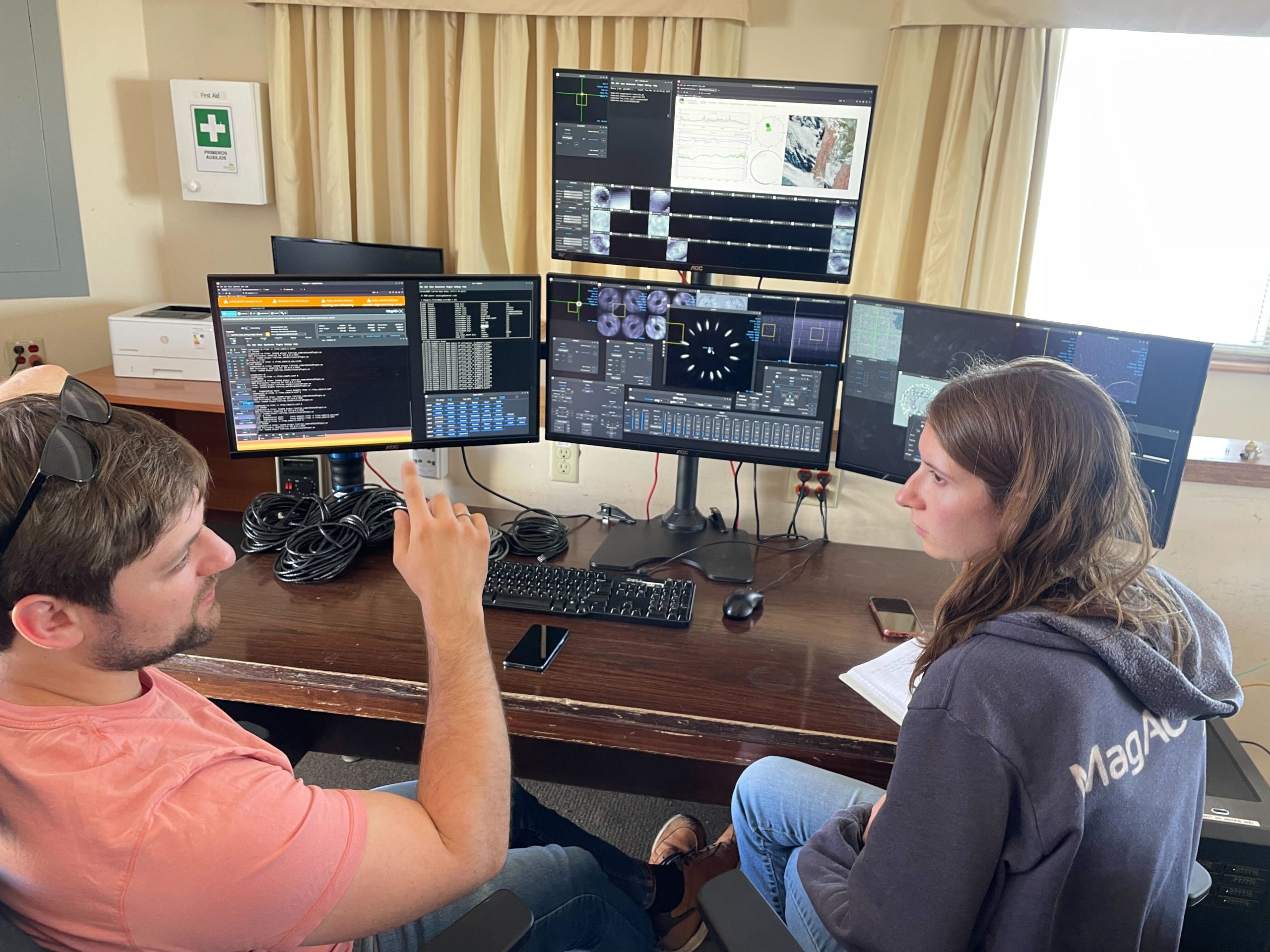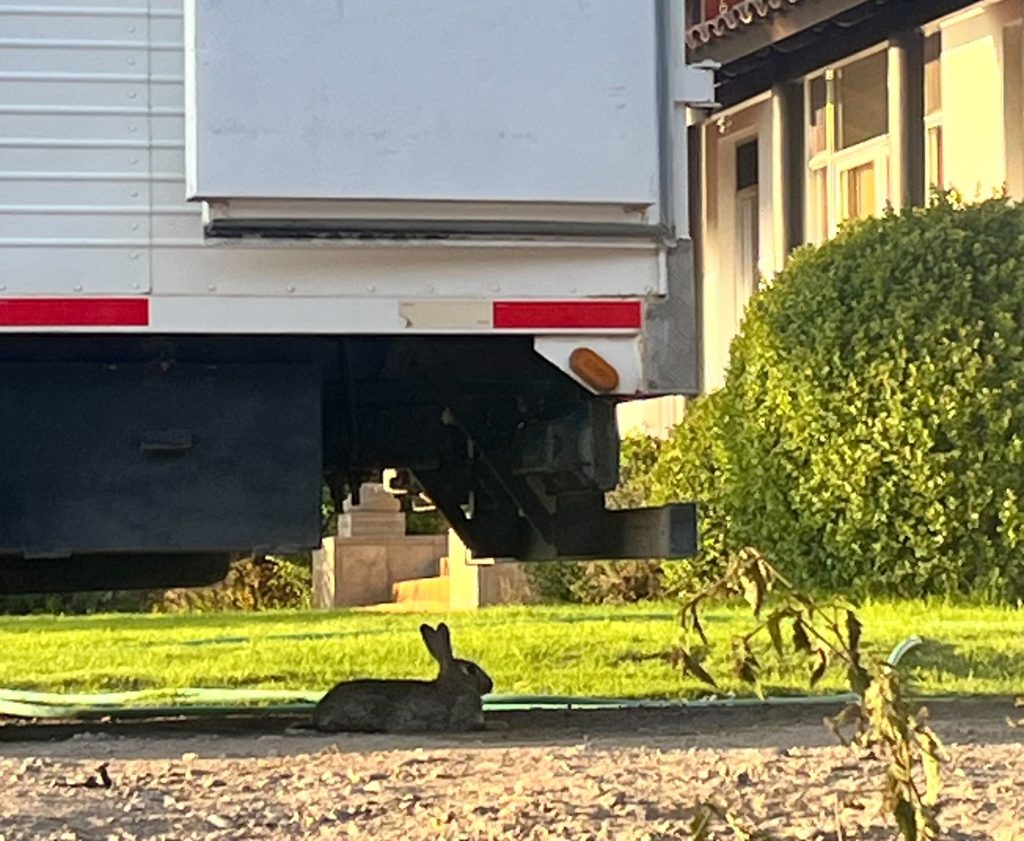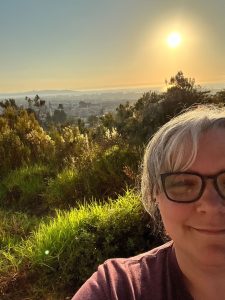Hard to believe I’m back here! I was so convinced 2023A would be my last trip to Chile with the MagAO-X team that I tried to do all my tourist stuff in one go last year. In the past year, I’ve defended my dissertation, moved across the country, and begun a fellowship at the Center for Computational Astrophysics of the Flatiron Institute, a division of the Simons Foundation. (That is officially how we are supposed to refer to it, officially. Unofficially, it’s just “CCA.”)
Today’s lesson is that sometimes you try your best to sleep all day and just can’t manage it, even if you exhausted yourself working the longest day. Those of us with this problem were today’s accidental day crew: myself, Sebastiaan, Maggie, and Eden. We got up for lunch and did some daytime engineering on MagAO-X.
Maggie and Sebastiaan prepared to test the Holographic Dispersed Fringe Sensor (patent pending?) on-sky, shoring up its credibility for inclusion in the Giant Magellan Telescope project’s plans. I helped Eden get started with fixr, my Python library to read the format for our images that have been extremely reordered. I did some work on packaging fixr as well as getting various guest observer software creature comforts working consistently once again.
We all met up at dinner (save Jialin, who had to attend a class online). Tuesday is turno day, where the crew that’s been working since last Tuesday gets replaced by all new staff fresh from their week off-duty. While I will miss Sr. Verdugo’s desserts, this turno‘s cooks are breaking new ground in LCO salad bar operations. Imagine, sliced strawberries in a salad! I’ve never seen the like here before.
Josh Liberman regaled us with tales of the risks of excess cheese and the good sense of always traveling with Strunk & White’s elements of style. Katie always carries nail clippers instead. (I’m not sure why either of those were needed at dinner, but it’s certainly preferable to be well-spoken and well-groomed than the opposite.)
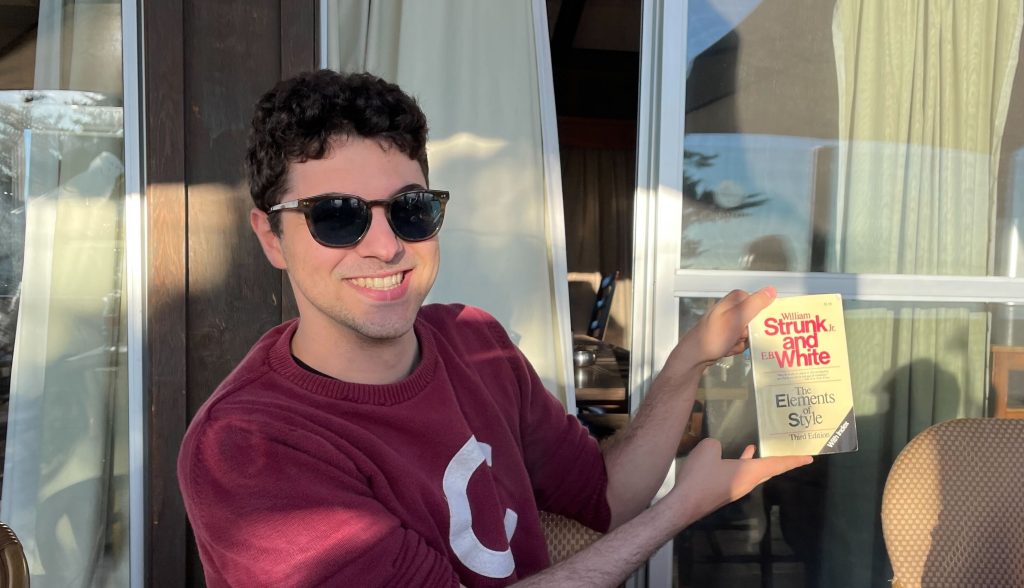
Meanwhile, down at El Pino, Logan Pearce was enjoying the local wildlife and natural environment.
Today also saw the arrival of Jialin Li, who arrived on the mountain after a one-day delay not unlike my own. (Did you know LATAM has a ninety minute cutoff for accepting checked bags? Well, I do now.)
Jialin is not only Laird Close’s graduate student but is also a heuristic interactive algorithm for observer time scheduling. Each astronomer has certain targets, which rise and set at certain times, and a certain number of nights (or fractional nights) allocated by their institution. Balancing these constraints is hard, possibly even NP-hard. Unfortunately, Jialin was incommunicado in transit yesterday, and the schedule was pulled in all directions in her absence. Sebastiaan began compiling constraints based on when people would be ready for various engineering tasks, when they’d be arriving onsite, when they’d be leaving, and whatnot.
So, when she arrived, the schedule was still very much in flux. The control room at dusk was alive with furious multitasking. At one point Logan Pearce called in from the hotel in La Serena (where she is recuperating) to try and understand the scheduling spreadsheet, which was live updating rapidly before her very eyes. After much hemming and hawing and proverbial horse-trading, an acceptable schedule solution was reached—just as the sun set.
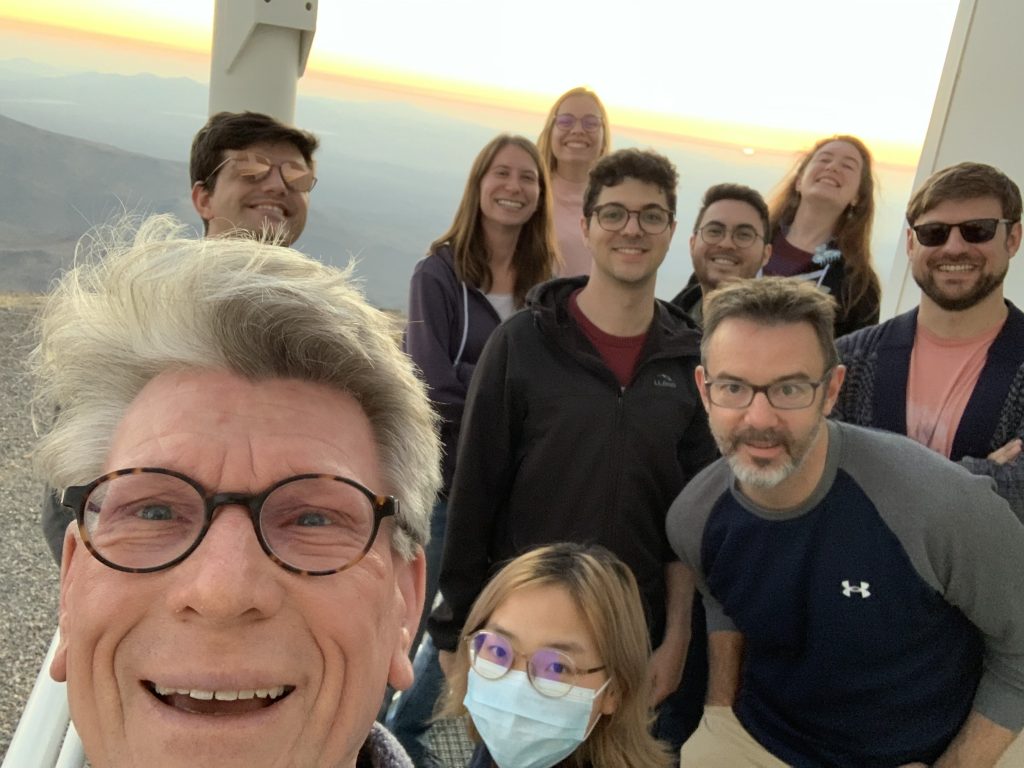
For tonight’s scheduled performance, the role of Dr. Alycia Weinberger was played by the understudy, Jay Kueny. Jay acquired more data of some of Alycia’s favorite debris disk targets. MagAO-X can image shorter wavelengths than MagAO+Clio could, and produces better images than MagAO+VisAO did. This means the residual light from the star doesn’t spread out as far, making it easier to detect and characterize the parts of the disk closest to the star in our images.
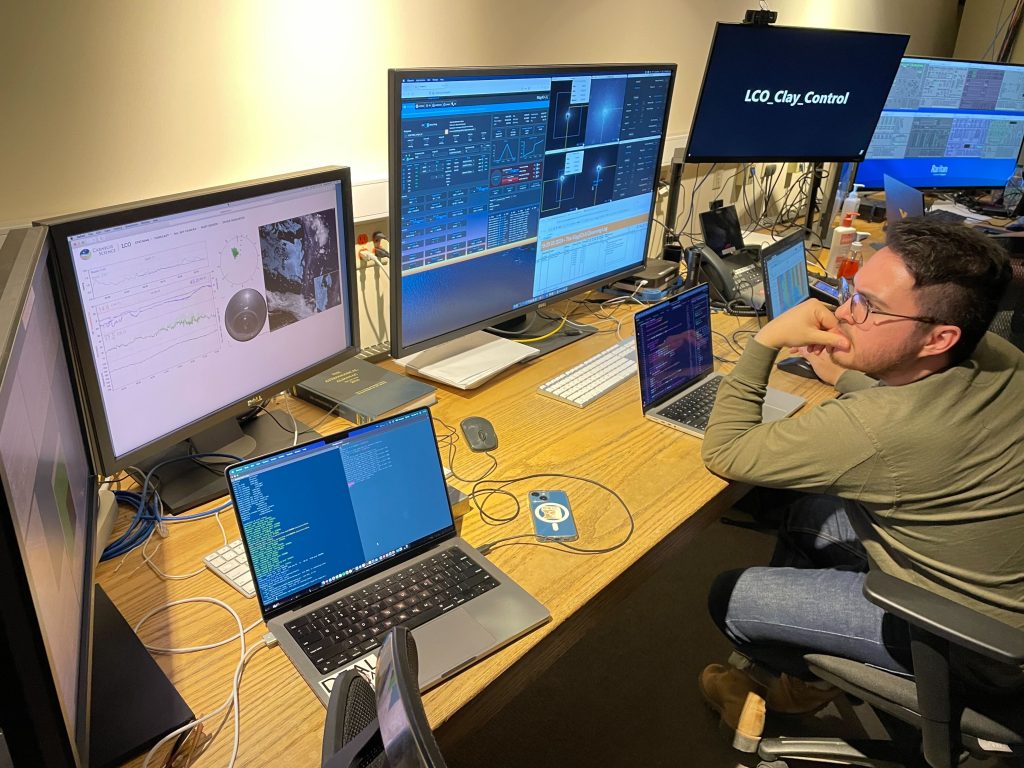
The bad seeing conditions we had initially mellowed out to more typical 0.5–0.6” seeing after the sun had been down for a little while, and we got some good data on HD 61005 for Alycia. Alas, it could not last. Clouds began to gather on the horizon, and the wind picked up something fierce. The telescope can’t operate in high winds, so this kiboshed a lot of our plans for the evening.
You can see what happened on the plot below, most easily recognized by the big chunk of missing seeing data. Winds got above 35 mph average, which meant we had to shut down. Since there’s never any shortage of things to do, and MagAO-X has an internal “telescope simulator” source, we attempted to make the most of this time for engineering.
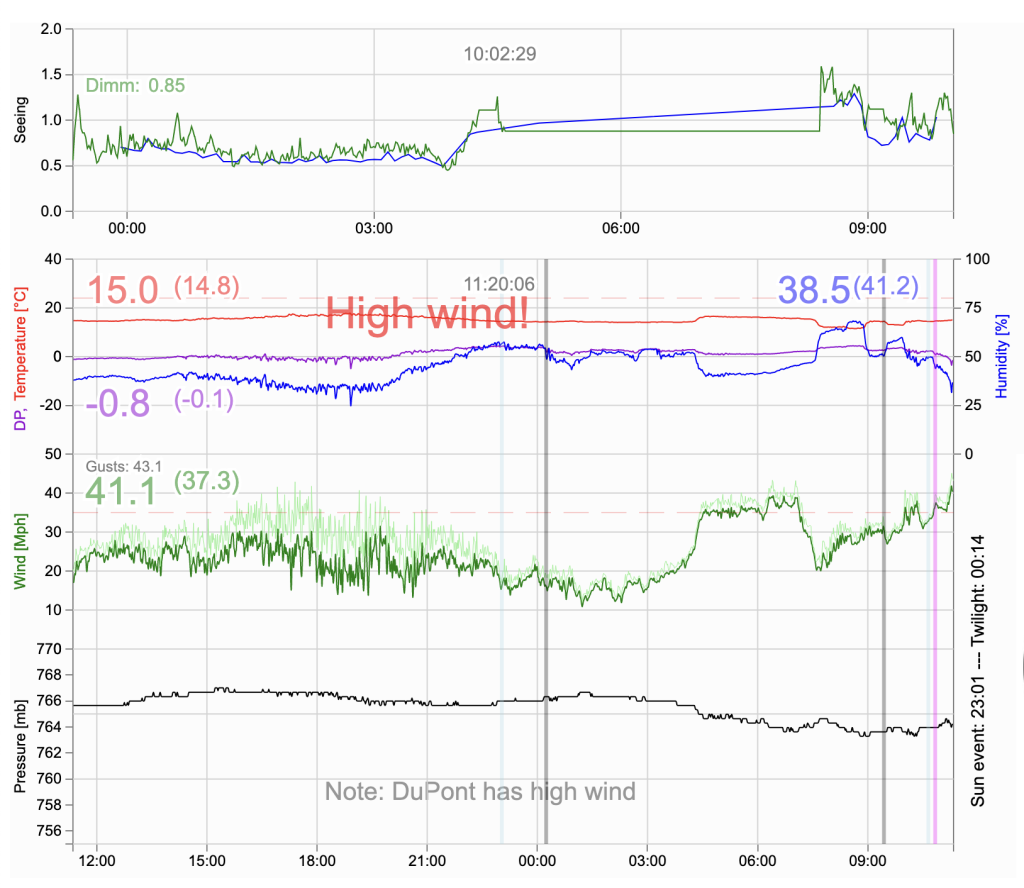
While Jared continued polishing MagAO-X Halpha performance with internal calibrations, a few of us retired to the break room to audition songs for Song of the Day. There were a few rejected choices (too sad, too raunchy, contains swears, etc.) but I think I picked a good one.
Around 4:58, Sebastiaan popped his head outside and reported seeing “a ton of stars” so we all traipsed back upstairs bright-eyed and bushy-tailed… only to hear Jared say “don’t get excited.” Although a ton of stars were visible, the humidity was climbing fast, and threatening clouds were gathering in the North.
We all got less excited. As we got close to sunrise, humidity plateaued and the average wind speed stayed low long enough that our telescope operator (the incomparable Alberto Pastén) decided it was safe to reopen. At this point, science was off the menu: not only was engineering scheduled for the end of the night, but the conditions were too bad for any but the brightest targets anyhow.
The Chekhov’s HDFS introduced in the beginning of the blog post must go off by the end, so Sebastiaan quickly slotted it in to take some data under realistic 90th-percentile conditions. It was tough to keep things stable, and the dispersed fringes occasionally disappeared entirely, but we took some data of a double star and got to see all the fringes doubled. That’ll be fun to disentangle.
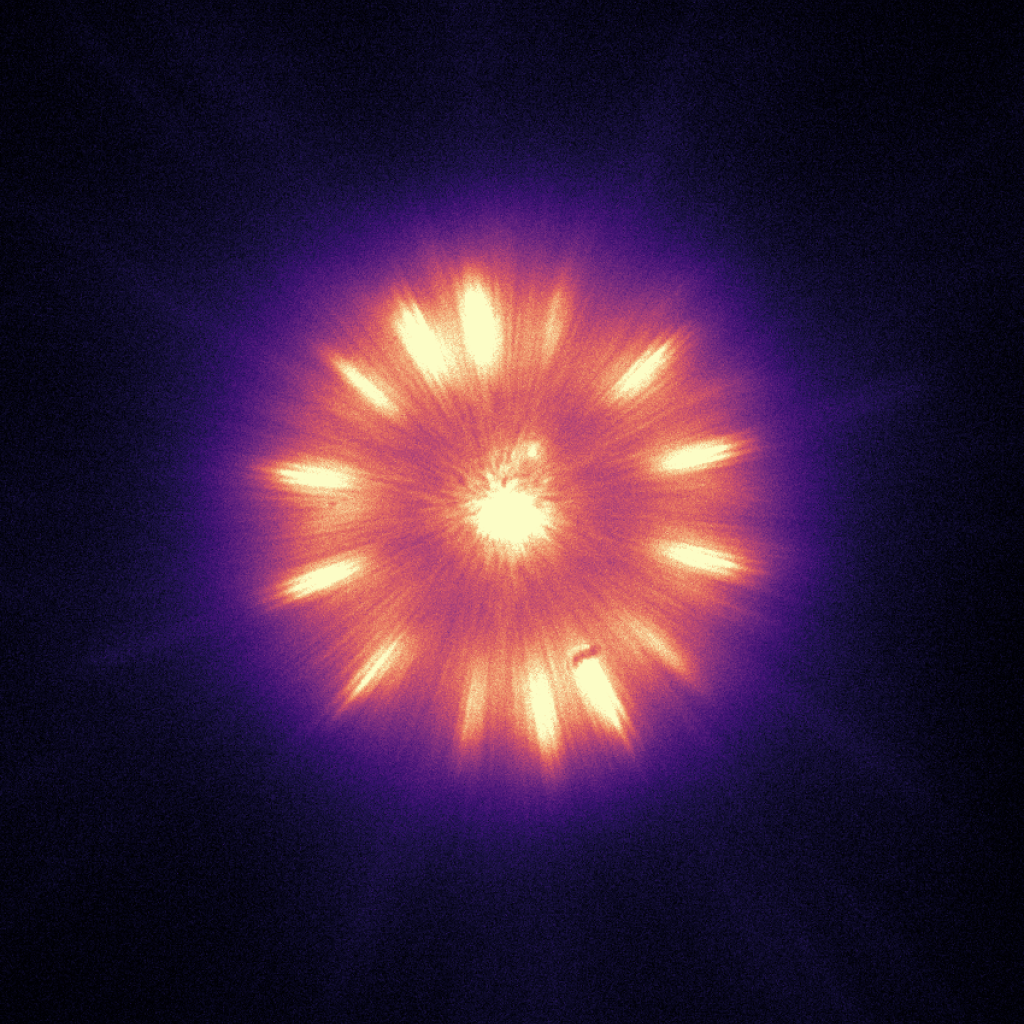
After we finished, Sebastiaan and I stayed up for breakfast and were rewarded with this view of the valley filled with clouds trapped in the inversion.
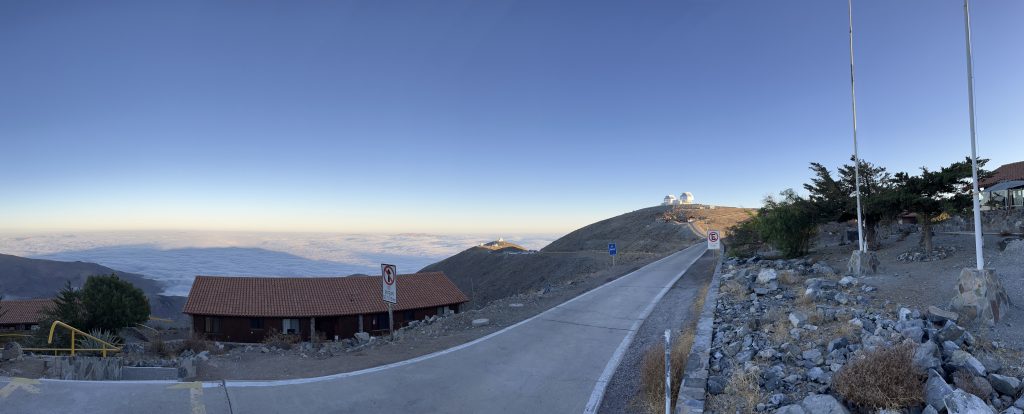
Today’s song of the day expresses a desire for a counterfactual reality in which the clouds are absent and the seeing is always below half an arcsecond. I think that’s what they were singing about, anyway.
